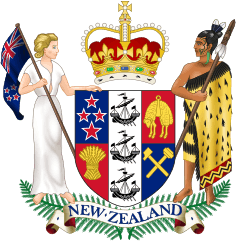Leader of the Legislative Council
In the New Zealand Parliament, the Leader of the Legislative Council was a government minister appointed by the Prime Minister of New Zealand to be responsible for the management of government business in the Legislative Council until its abolition.
The office was created to delegate authority for a Member of the Legislative Council (MLC) to introduce government legislation on behalf of the Prime Minister (who was normally a member of the House of Representatives instead).
List of holders
The following individuals held the office of Leader of the Legislative Council.[1]
- Key
Independent Liberal Reform United Labour National
| No. | Name | Portrait | Term of Office | Government | |||
|---|---|---|---|---|---|---|---|
| 1 | Frederick Whitaker | 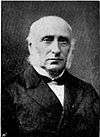 |
12 May 1856 | 24 May 1856 | Sewell | ||
| Fox I | |||||||
| 2 | Ralph Richardson |  |
24 May 1856 | 2 June 1856 | |||
| (1) | Frederick Whitaker |  |
2 June 1856 | 16 July 1861 | Stafford I | ||
| Fox II | |||||||
| 3 | Daniel Pollen |  |
16 July 1861 | 6 August 1862 | |||
| 4 | Henry Tancred |  |
6 August 1862 | 2 November 1863 | Domett | ||
| Whitaker I | |||||||
| (1) | Frederick Whitaker |  |
2 November 1863 | 24 November 1864 | |||
| 5 | Henry Sewell | 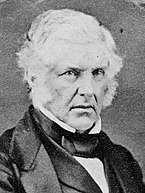 |
24 November 1864 | 26 July 1865 | Weld | ||
| 6 | James Crowe Richmond |  |
26 July 1865 | 17 October 1865 | |||
| 7 | Andrew Russell |  |
17 October 1865 | July 1866 | Stafford II | ||
| 8 | John Johnston | 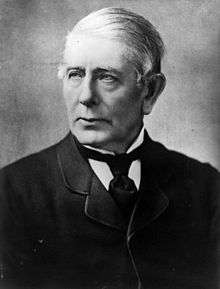 |
July 1866 | July 1867 | |||
| 9 | John Richardson | 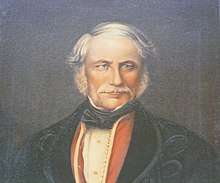 |
July 1867 | July 1868 | |||
| (3) | Daniel Pollen |  |
July 1868 | 2 July 1869 | |||
| Fox III | |||||||
| 10 | William Gisborne | 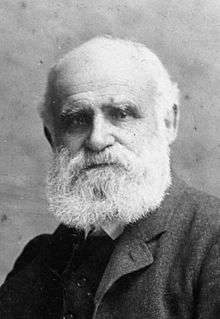 |
2 July 1869 | 10 September 1872 | |||
| (5) | Henry Sewell |  |
10 September 1872 | 11 October 1872 | Stafford III | ||
| 11 | George Waterhouse |  |
11 October 1872 | 15 July 1873 | Waterhouse | ||
| Fox IV | |||||||
| Vogel I | |||||||
| (3) | Daniel Pollen |  |
15 July 1873 | 16 October 1877 | |||
| Pollen | |||||||
| Vogel II | |||||||
| Atkinson I, II | |||||||
| 12 | George Stoddart Whitmore |  |
16 October 1877 | 8 October 1879 | Grey | ||
| (1) | Frederick Whitaker |  |
8 October 1879 | 4 June 1884 | Hall | ||
| Whitaker II | |||||||
| Atkinson III | |||||||
| 13 | Richard Oliver | 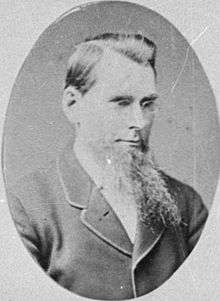 |
4 June 1884 | 19 August 1884 | |||
| (12) | George Stoddart Whitmore |  |
19 August 1884 | 29 August 1884 | Stout–Vogel | ||
| 14 | George McLean |  |
29 August 1884 | 4 September 1884 | Atkinson IV | ||
| 15 | Patrick Buckley | 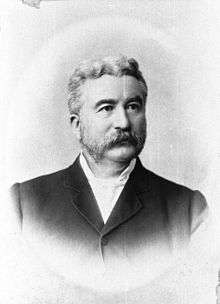 |
4 September 1884 | 11 October 1887 | Stout–Vogel | ||
| (1) | Frederick Whitaker |  |
11 October 1887 | 27 January 1891 | Atkinson V | ||
| (15) | Patrick Buckley |  |
27 January 1891 | 11 June 1896 | Liberal | ||
| 16 | William Campbell Walker |  |
11 June 1896 | 29 June 1903 | |||
| 17 | Albert Pitt |  |
29 June 1903 | 27 June 1907 | |||
| 18 | John Findlay | 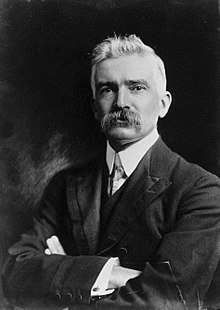 |
27 June 1907 | 1 August 1911 | |||
| 19 | James McGowan | 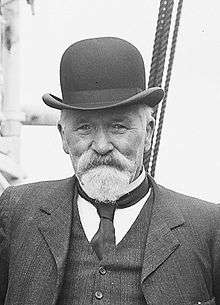 |
1 August 1911 | 29 August 1911 | |||
| (18) | John Findlay |  |
29 August 1911 | 16 February 1912 | |||
| (19) | James McGowan |  |
16 February 1912 | 27 June 1912 | |||
| 20 | Oliver Samuel |  |
27 June 1912 | 10 July 1912 | |||
| 21 | Francis Bell | 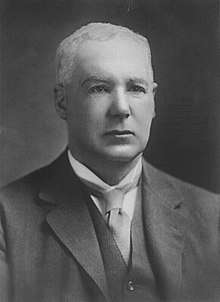 |
10 July 1912 | 17 June 1926 | Reform | ||
| 22 | Heaton Rhodes | .jpg) |
17 June 1926 | June 1927 | |||
| (21) | Francis Bell |  |
June 1927 | 10 December 1928 | |||
| 23 | Thomas Sidey |  |
10 December 1928 | 2 October 1931 | United | ||
| United–Reform | |||||||
| 24 | Robert Masters | 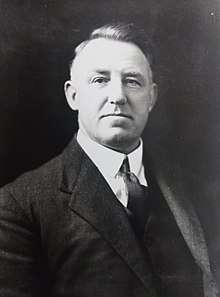 |
2 October 1931 | 15 October 1931 | |||
| 25 | James Parr | 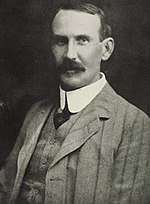 |
15 October 1931 | 5 December 1933 | |||
| (24) | Robert Masters |  |
5 December 1933 | 25 March 1936 | |||
| 26 | Mark Fagan |  |
25 March 1936 | 17 September 1939 | First Labour | ||
| 27 | David Wilson |  |
17 September 1939 | 26 September 1944 | |||
| 28 | Angus McLagan |  |
26 September 1944 | 25 June 1947 | |||
| (27) | David Wilson |  |
25 June 1947 | 27 June 1950 | |||
| 29 | William Polson |  |
27 June 1950 | 31 December 1950 | First National | ||
gollark: Flat... earth... discord?
gollark: What?
gollark: I mostly just wear a jumper, or if it's rainy (this is the UK, it is always rainy) a coat.
gollark: I basically just want shoes which stay on my feet, without lace fiddling.
gollark: … like using more annoying shoes? why?
See also
Notes
- Wilson 1985, pp. 123-4.
References
- Wilson, James Oakley (1985) [First published in 1913]. New Zealand Parliamentary Record, 1840–1984 (4th ed.). Wellington: V.R. Ward, Govt. Printer. OCLC 154283103.CS1 maint: ref=harv (link)
This article is issued from Wikipedia. The text is licensed under Creative Commons - Attribution - Sharealike. Additional terms may apply for the media files.
